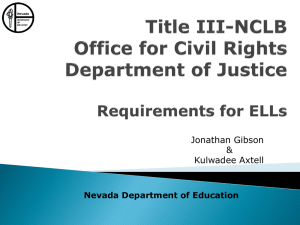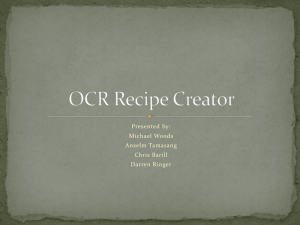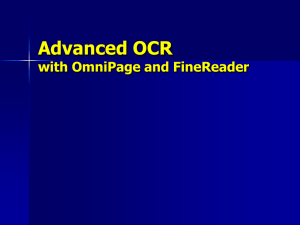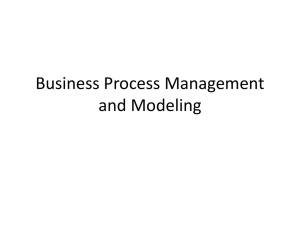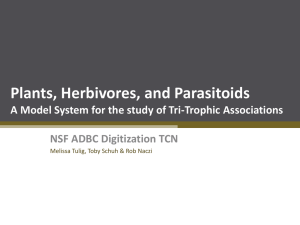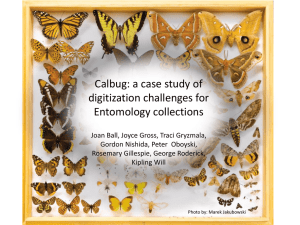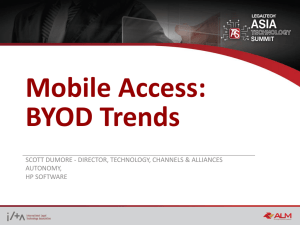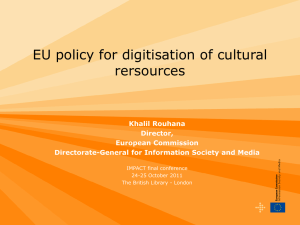The use of OCR in the digitisation of herbarium specimens
advertisement
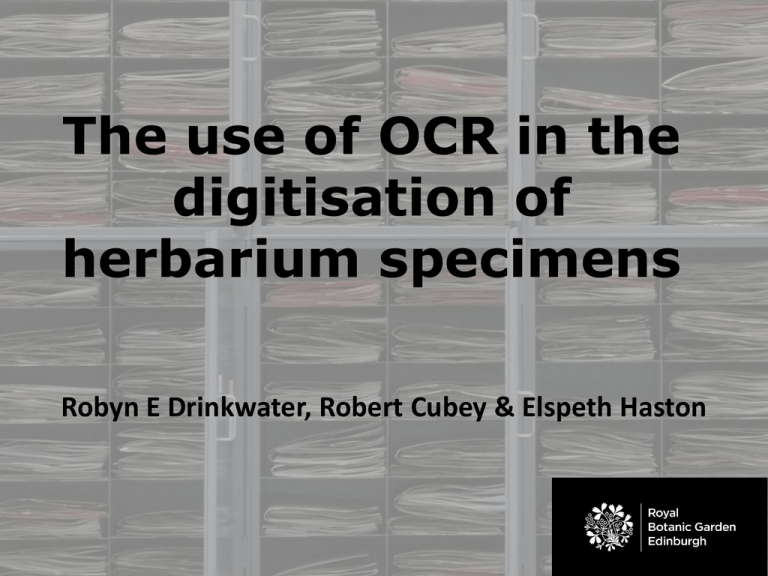
The use of OCR in the digitisation of herbarium specimens Robyn E Drinkwater, Robert Cubey & Elspeth Haston What is happening in digitisation? • … and these minimal data records are going to need data added to them. What are the options when using optical character recognition (OCR)? • Parse OCR text directly into the database fields • Use OCR data to prepare the specimens for manual / semi automated data entry • We have had a digitisation project running to digitise all the specimens from SW Asia and the Middle East at RBGE. • Minimal data had been captured originally* – Filing name – Geographical filing region – Barcode • We have been routinely processing all our specimen images through ABBYY OCR software. * E Haston, R Cubey, DJ Harris (2011). Data concepts and their relevance for data capture in large scale digitisation of biological collections. International Journal of Humanities and Arts Computing 6 (1-2), 111-119. Exploring the data… Step One • We used the OCR output text to pull out over 7,000 specimen images and associated data records • These were then prepared into batches: – some random – some sorted by collector and / or country Step Two • A team of six digitisers at RBGE completed a series of trials • They used two different protocols for data entry – complete records – partial records (including collector and geographical information but not habitat and description) • In total 7,200 specimens were processed Results… • Compared to unsorted, random specimens, those which were sorted based on data from the OCR output were quicker to digitise • Of the methods tested here, the most efficient used a protocol based on partial data entry, working with specimens which had been filtered by Collector and Country The human factor… Thinking about the ease of entering the data for each test, rate them on their relative ease of use 100% 90% 80% 70% 60% 5- Hardest 50% 4 3 40% 2 1- Easiest 30% 20% 10% 0% Random 1 Collector Country Collector & Country Collector & Country Random 2 The human factor… • Digitisation staff preferred working with sorted specimens • They also preferred working with physical specimens rather than images Some more thoughts… • This work is more easily applied than parsing data from the OCR output • It can be used in conjunction with other tools later in the digitisation process since these other processes will almost certainly be more efficient with sorted batches of specimens • Other tasks can also be built on top of this: eg condition assessment, QC, etc • It’s surprising what can be used to help filter specimens – the black art of search terms! Acknowledgments • The digitisation team at RBGE: Nicky Sharp, David Braidwood, Muhammad Ghazali, Lorna Glancy, Dorota Jaworska, Esther Nieto. • The Andrew W Mellon Foundation • Dr Antje Ahrends (RBGE) & Dr Chris Glaseby (BIOSS) for statistical advice

